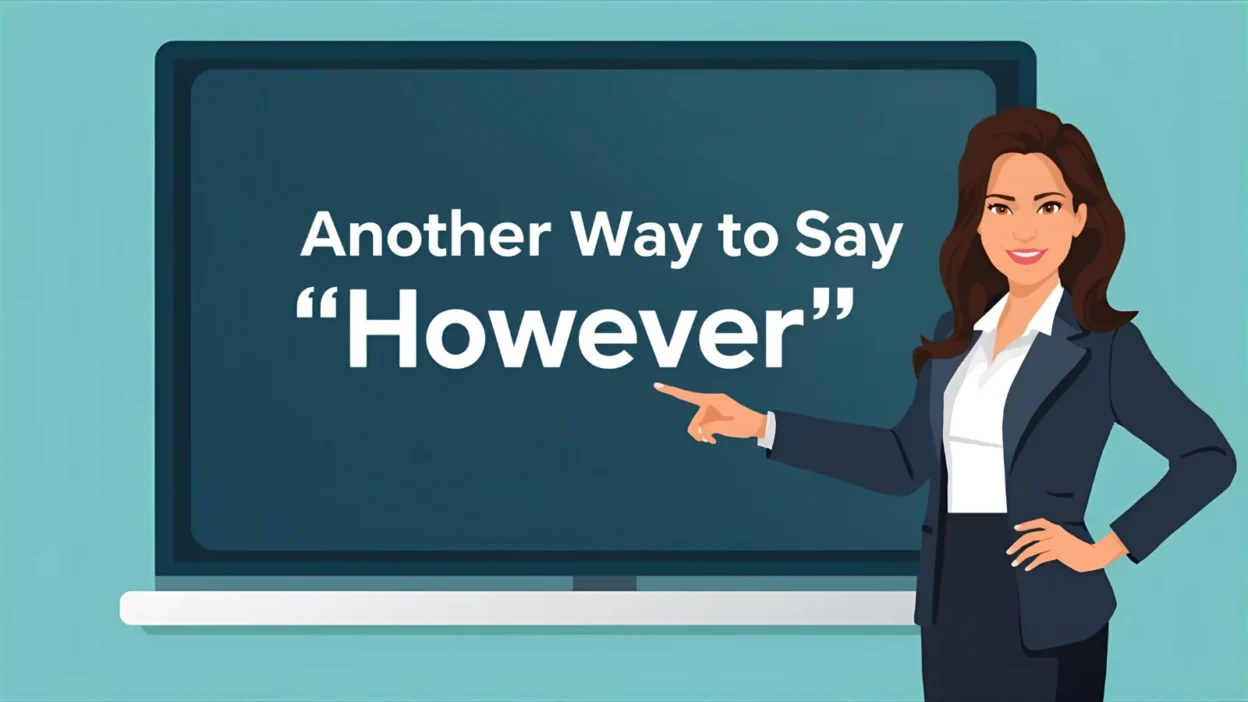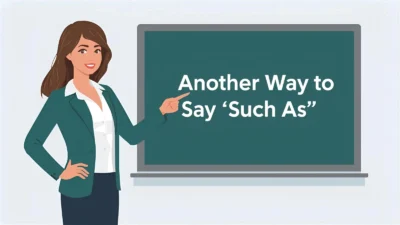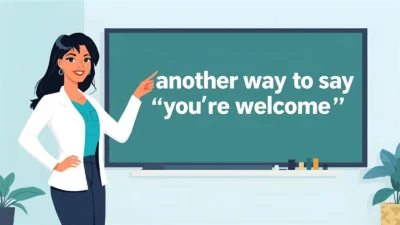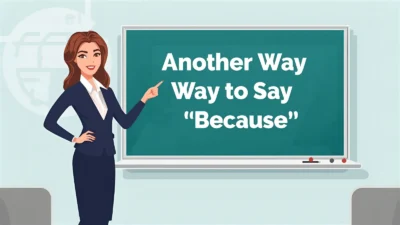The word “however” is one of the most common connectors in English. It signals contrast, contradiction, or an exception to what has just been said. While it’s clear and effective, repeating “however” too often can make your writing feel stiff, predictable, or monotonous. That’s why having a range of alternatives is valuable—you can adapt your language to different tones, levels of formality, and contexts.
In this article, you’ll discover 25 strong alternatives to “however,” each explained with meaning, detailed usage, an example, best context, and tone.
1. Nevertheless
Meaning: Despite what was just mentioned.
Detailed Explanation: A direct synonym that feels more formal than “however.”
Scenario Example: The task was difficult; nevertheless, she completed it on time.
Best Use: Academic writing, essays, formal reports.
Tone: Formal, polished.
2. Nonetheless
Meaning: In spite of what has been said.
Detailed Explanation: Very close to “nevertheless,” slightly softer in tone.
Scenario Example: The journey was long; nonetheless, it was worth it.
Best Use: Academic writing, articles, structured arguments.
Tone: Formal, professional.
3. Yet
Meaning: Introduces a surprising or opposing point.
Detailed Explanation: Short and impactful, common in both writing and speech.
Scenario Example: It was raining, yet they continued their hike.
Best Use: Essays, everyday writing, storytelling.
Tone: Neutral, flexible.
4. Still
Meaning: Highlights persistence in contrast to expectations.
Detailed Explanation: More casual than “however,” but clear and effective.
Scenario Example: He was tired, still he kept working.
Best Use: Informal writing, conversations, narratives.
Tone: Casual, conversational.
5. Even so
Meaning: Acknowledges a point but introduces contrast.
Detailed Explanation: Works well when you want to emphasize concession.
Scenario Example: The exam was tough. Even so, she passed with flying colors.
Best Use: Essays, presentations, casual explanations.
Tone: Neutral, thoughtful.
6. On the other hand
Meaning: Introduces an opposing viewpoint or contrast.
Detailed Explanation: Highlights comparison more clearly than “however.”
Scenario Example: This solution is cheaper. On the other hand, it’s less reliable.
Best Use: Arguments, debates, essays.
Tone: Analytical, balanced.
7. That said
Meaning: Acknowledges a point before presenting contrast.
Detailed Explanation: Works well in conversational or semi-formal writing.
Scenario Example: I agree with your idea. That said, we should consider the risks.
Best Use: Articles, discussions, blogs.
Tone: Conversational, reflective.
8. All the same
Meaning: Despite what has just been said, something remains true.
Detailed Explanation: Adds a slightly old-fashioned but emphatic touch.
Scenario Example: It was raining; all the same, the match went ahead.
Best Use: Formal essays, storytelling, reflective writing.
Tone: Neutral, formal.
9. Having said that
Meaning: Balances agreement with contrast.
Detailed Explanation: Common in both spoken and written English.
Scenario Example: I liked the book. Having said that, the ending was weak.
Best Use: Discussions, opinion writing.
Tone: Conversational, semi-formal.
10. But
Meaning: A simple word to show contrast.
Detailed Explanation: Shortest and most widely used alternative.
Scenario Example: She wanted to join, but she was too busy.
Best Use: Everyday conversation, informal writing.
Tone: Neutral, versatile.
11. Conversely
Meaning: Introduces the opposite idea or perspective.
Detailed Explanation: More formal, often used in analysis.
Scenario Example: Conversely, higher spending may reduce overall savings.
Best Use: Academic writing, business reports.
Tone: Formal, analytical.
12. In contrast
Meaning: Points to a difference between two things.
Detailed Explanation: More structured and formal than “however.”
Scenario Example: In contrast to last year, profits have doubled.
Best Use: Reports, research, essays.
Tone: Academic, precise.
13. In spite of that
Meaning: Introduces something that happens despite difficulty.
Detailed Explanation: Slightly more casual and explanatory.
Scenario Example: It was raining; in spite of that, they went jogging.
Best Use: Informal writing, storytelling.
Tone: Conversational, clear.
14. On the contrary
Meaning: Refutes or contradicts the previous statement.
Detailed Explanation: Stronger than “however,” used to oppose directly.
Scenario Example: It wasn’t boring. On the contrary, it was fascinating.
Best Use: Debates, persuasive writing.
Tone: Assertive, formal.
15. At the same time
Meaning: Shows coexistence of two opposing factors.
Detailed Explanation: Suggests balance or simultaneity.
Scenario Example: He’s strict, but at the same time, very fair.
Best Use: Discussions, balanced arguments.
Tone: Reflective, neutral.
16. Be that as it may
Meaning: Acknowledges something but maintains contrast.
Detailed Explanation: Slightly formal, almost literary in tone.
Scenario Example: Be that as it may, we still need to move forward.
Best Use: Formal discussions, speeches.
Tone: Polished, serious.
17. Then again
Meaning: Suggests reconsideration of a previous point.
Detailed Explanation: Informal and reflective, often used in conversation.
Scenario Example: I might go to the party. Then again, I may just stay home.
Best Use: Casual talks, blogs, narratives.
Tone: Informal, thoughtful.
18. Even though
Meaning: Introduces contrast with emphasis.
Detailed Explanation: Works best in subordinate clauses.
Scenario Example: Even though it was cold, they went swimming.
Best Use: Casual and semi-formal writing.
Tone: Neutral, direct.
19. In any case
Meaning: Suggests contrast or a shift in focus.
Detailed Explanation: Moves the argument along while acknowledging contrast.
Scenario Example: It may rain. In any case, we’ll bring umbrellas.
Best Use: Conversations, articles, speeches.
Tone: Neutral, flexible.
20. Regardless
Meaning: Suggests that something holds true despite opposition.
Detailed Explanation: Short, impactful, and modern-sounding.
Scenario Example: We’ll continue regardless of the challenges.
Best Use: Informal and semi-formal writing.
Tone: Strong, decisive.
21. Albeit
Meaning: Expresses a concession or limitation.
Detailed Explanation: More literary or formal, less commonly used in speech.
Scenario Example: The project was successful, albeit delayed.
Best Use: Essays, formal documents.
Tone: Formal, sophisticated.
22. Still and all
Meaning: Old-fashioned way to express contrast.
Detailed Explanation: Rare today, but adds charm in storytelling.
Scenario Example: He wasn’t perfect—still and all, he tried his best.
Best Use: Creative writing, storytelling.
Tone: Nostalgic, informal.
23. Though
Meaning: Common, flexible word to show contrast.
Detailed Explanation: Can be placed at beginning, middle, or end of a sentence.
Scenario Example: The task was hard. It was fun, though.
Best Use: Everyday speech, casual writing.
Tone: Neutral, conversational.
24. Yet still
Meaning: Emphasizes persistence despite contrast.
Detailed Explanation: Combines two words for dramatic effect.
Scenario Example: It was difficult, yet still she persevered.
Best Use: Persuasive writing, speeches.
Tone: Emphatic, dramatic.
25. Notwithstanding
Meaning: Despite what was just stated.
Detailed Explanation: Very formal, often used in legal or academic contexts.
Scenario Example: Notwithstanding these challenges, progress has been made.
Best Use: Legal writing, academic reports.
Tone: Formal, authoritative.
Conclusion
While “however” is a strong and versatile word, relying on it too often can weaken your style. Alternatives like “nevertheless” or “nonetheless” polish your academic writing, while “that said” or “then again” work better in casual conversations. With these 25 alternatives, you can adapt your language to fit any context—formal, persuasive, conversational, or creative—making your communication more precise, engaging, and effective.



